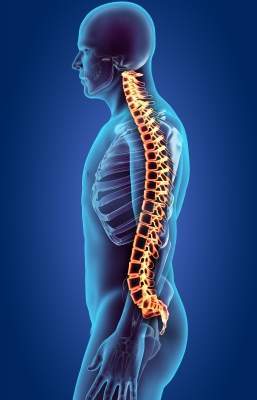
The first surgery was performed by Tarek Elalayli from Nashville, Tennessee.
Elalayli said: “The implant, consisting of a novel combination of solid and porous silicon nitride, is well-designed, and the surgical implantation was straight forward. The benefits of this new device include the potential for bone in-growth as well as on-growth, while a central lumen gives the surgeon flexibility to add bone graft, if needed. The device and underlying technology are a step toward spine fusion without the need for bone graft additives; with the advantages of good radiographic visualization, and inherent antibacterial properties of silicon nitride. No other spinal fusion implant combines all these properties.”
The Valeo C+CsC with Lumen is Amedica’s newest spinal implant that received FDA clearance earlier this year. The device is a composite silicon nitride implant that combines different densities of Amedica’s proprietary medical grade silicon nitride ceramic.
A solid, outer shell of nanostructured silicon nitride is manufactured around an inner porous layer, called CsC (cancellous structured ceramic). CsC is approved for clinical use in Europe, and published clinical data from the CASCADE clinical trial have shown that it achieves spinal fusion without added bone grafts or fillers, at rates similar to those achieved by bone autograft.
Amedica chairman Sonny Bal said: “Several of our published reports have challenged the existing dogma that the surface texture of a biomaterial alone affects bone healing. Instead, we have shown that surface microchemistry also plays a critically important role in promoting bone healing. In the case of silicon nitride, we can precisely engineer both the surface nanostructure, as well as the surface microchemistry of an implant in order to stimulate bone-forming cells, speed up bone fusion, and discourage bacterial adhesion.
“The Valeo C+CsC with Lumen device captures these advantages by manufacturing different material densities into one smart, bioactive implant that is already optimized for spinal fusion. In contrast, competing implants made of inert metal and plastic usually require enhancement with cost-added bone fillers, surface texturing, or related gimmicks. Unlike any other biomaterial available for spinal fusion today, silicon nitride is in a class by itself.”
The Valeo C+CsC with Lumen Interbody Fusion Device is indicated for intervertebral body fusion of the cervical spine in skeletally mature patients. Additional information about Amedica’s complete line of products can be found at www.amedica.com.
Source: Company Press Release.




